Part 2 of 3
The Lampstand
The Menorah of the Tabernacle
After washing their hands and feet at the laver, the priests could enter the Holy Place, which was the first room in the tent of the tabernacle. There were three pieces of furniture in the Holy Place: the menorah, the table of showbread and the golden altar of incense.
The menorah, also called the golden lampstand or candlestick, stood at the left side of the Holy Place. It was hammered out of one piece of pure gold. Like for the laver, there were no specific instructions about the size of the menorah, but the fact that it was fashioned out of one piece of pure gold would have limited its size.
The lampstand had a central branch from which three branches extended from each side, forming a total of seven branches. Seven lamps holding olive oil and wicks stood on top of the branches. Each branch looked like that of an almond tree, containing buds, blossoms and flowers. The priests were instructed to keep the lamps burning continuously.
The Lord said to Moses, Command the Israelites to bring you clear oil of pressed olives for the light so that the lamps may be kept burning continually. Outside the curtain of the Testimony in the Tent of Meeting, Aaron is to tend the lamps before the Lord from evening till morning, continually. (Leviticus 24:1-3)
The lampstand was the only source of light in the Holy Place, so without it, the priests would have been moping around in the dark. The light shone upon the table of showbread and the altar of incense, enabling the priests to fellowship with God and intercede on behalf of Gods people. Just as the lampstand was placed in Gods dwelling place so that the priests could approach God, Jesus, the true light that gives light to every man (John 1:9) came into the world so that man could see God and not live in spiritual darkness anymore.
Jesus said:
I am the light of the world. Whoever follows me will never walk in darkness, but will have the light of life. (John 8:12)
I have come into the world as a light, so that no one who believes in me should stay in darkness. (John 9:46)
Jesus is represented by the main branch of the lampstand, and we as believers are represented by the six branches that extend from original branch. Having believed, we are now living as children of light (Ephesians 5:8) who draw our source of light from Jesus, the true light. Jesus calls us light of the world and commands us to let your light shine before men, that they may see your good deeds and praise your Father in heaven (Matthew 5: 14, 16). Not only so, but the branches serve as a picture of Jesus description of our relationship with him: I am the vine, you are the branches
apart from me you can do nothing (John 15:5).
Two other significant symbols that can be seen from include the fact that it was made of pure gold (not gold plated) and had seven branches. Pure gold is a representation of the deity and perfection of Jesus Christ, and seven is the number of completeness in the Bible. The believer is made complete by the perfection of Christ.
**********************************************
The Table of Showbread of the Tabernacle
The table of showbread was a small table made of acacia wood and overlaid with pure gold. It measured 3 feet by 1.5 feet and was 2 feet, 3 inches high. It stood on the right side of the Holy Place across from the lampstand and held 12 loaves of bread, representing the 12 tribes of Israel. The priests baked the bread with fine four and it remained on the table before the Lord for a week; every Sabbath day the priests would remove it and eat it in the Holy Place, then put fresh bread on the table. Only priests could eat the bread, and it could only be eaten in the Holy Place, because it was holy.
Showbread also was called bread of the presence because it was to be always in the Lords presence. The table and the bread were a picture of Gods willingness to fellowship and communion (literally speaking, sharing something in common) with man. It was like an invitation to share a meal, an extension of friendship. Eating together often is an act of fellowship. God was willing for man to enter into His presence to fellowship with Him, and this invitation was always open.
Jesus exemplified this when He ate with tax collectors, prostitutes and the sinners of Jewish society. But this was more than just a gesture of friendship on earth. Jesus came to call sinners to Him, make them right with God, so that they could enjoy everlasting fellowship with God.
I am the bread of life. He who comes to me will never go hungry, and he who believes in me will never be thirsty.
Your forefathers ate the manna in the desert, yet they died. But here is the bread that comes down from heaven, which a man may eat and not die. (John 6:35, 49-50)
God so desires our fellowship that He was willing to come to earth from heaven as our bread of life to give eternal life to all those who would partake in it. At Jesus last Passover meal with His disciples,
Jesus described Himself as bread again:
While they were eating, Jesus took bread, gave thanks and broke it, and gave it to his disciples, saying, Take and eat; this is my body. (Matthew 26:26)
Jesus broken body is our only access to fellowship with God. Today, we celebrate the Lords Supper, or communion, to remember this important truth. And today, as in the day of Moses tabernacle, God still desires to have fellowship and sit down for a feast with His people.
Here I am! I stand at the door and knock. If anyone hears my voice and opens the door, I will come in and eat with him, and he with me. (Revelations 3:20)
***************************************************
The Golden Altar of Incense of the Tabernacle
The golden altar of incense, which is not to be confused with the brazen altar, sat in front of the curtain that separated the Holy Place from the Holy of Holies. This altar was smaller than the brazen altar. It was a square with each side measuring 1.5 feet and was 3 feet high. It was made of acacia wood and overlaid with pure gold. Four horns protruded from the four corners of the altar.
God commanded the priests to burn incense on the golden altar every morning and evening, the same time that the daily burnt offerings were made. The incense was to be left burning continually throughout the day and night as a pleasing aroma to the Lord. It was made of an equal part of four precious spices (stacte, onycha, galbanum and frankincense) and was considered holy. God commanded the Israelites not to use the same formula outside the tabernacle to make perfume for their own consumption; otherwise, they were to be cut off from their people (Exodus 30:34-38).
The incense was a symbol of the prayers and intercession of the people going up to God as a sweet fragrance. God wanted His dwelling to be a place where people could approach Him and pray to Him.
for my house will be called a house of prayer for all nations. (Isaiah 56:7)
The picture of prayers wafting up to heaven like incense is captured in Davids psalm and also in Johns vision in Revelations:
May my prayer be set before you like incense; may the lifting up of my hands be like the evening sacrifice. (Psalm 141:2)
Another angel, who had a golden censer, came and stood at the altar. He was given much incense to offer, with the prayers of all the saints, on the golden altar before the throne. The smoke of the incense, together with the prayers of the saints, went up before God from the angels hand. (Revelations 8:3-4)
The golden altar, furthermore, is a representation of Christ, who is our intercessor before God the Father. During His days on earth, Jesus prayed for the believers. He was like the high priest of the tabernacle, who bore the names of each of the Israelite tribes on his breastplate before God. Just before He was betrayed and sentenced to death, Jesus interceded for His disciples and all believers, asking God to guard them from evil and sanctify them by His Word, and that they may see Gods glory and be a witness to the world (John 17:1-26). Today, Jesus still is our high priest at the Fathers side,
interceding for Gods people:
Christ Jesus, who died more than that, who was raised to life is at the right hand of God and is also interceding for us. (Romans 8:34)
Since we have been forgiven of our sins through the blood of Christ, we also come boldly in prayer in Jesus name. When we pray in Jesus name, we are praying based on the work He has done and not on our own merit. It is in His powerful name that we are saved and baptized, and in His name we live, speak and act.
And I will do whatever you ask in my name, so that the Son may bring glory to the Father. You may ask me for anything in my name, and I will do it. (John 14:13-14)
The horns of the golden altar were sprinkled with blood from the animal sacrifice to cleanse and purify it from the sins of the Israelites (Leviticus 4:7, 16:18). Just as the horns on the brazen altar represent the power of Christs blood to forgive sins, the horns on golden altar signify the power of His blood in prayer as we confess our sins and ask for His forgiveness.
And the prayer offered in faith will make the sick person well; the Lord will raise him up. If he has sinned, he will be forgiven. Therefore confess your sins to each other and pray for each other so that you may be healed. The prayer of a righteous man is powerful and effective. (James 5:15-16)
***************************************************
The Holy of Holies and the Veil
Within the Holy Place of the tabernacle, there was an inner room called the Holy of Holies, or the Most Holy Place. Judging from its name, we can see that it was a most sacred room, a place no ordinary person could enter. It was Gods special dwelling place in the midst of His people. During the Israelites wanderings in the wilderness, God appeared as a pillar of cloud or fire in and above the Holy of Holies. The Holy of Holies was a perfect cube its length, width and height were all equal to 15 feet.
A thick curtain separated the Holy of Holies from the Holy Place. This curtain, known as the veil, was made of fine linen and blue, purple and scarlet yarn. There were figures of cherubim (angels) embroidered onto it. Cherubim, spirits who serve God, were in the presence of God to demonstrate His almighty power and majesty. They also guarded the throne of God. These cherubim were also on the innermost layer of covering of the tent. If one looked upward, they would see the cherubim figures.
The word veil in Hebrew means a screen, divider or separator that hides. What was this curtain hiding? Essentially, it was shielding a holy God from sinful man. Whoever entered into the Holy of Holies was entering the very presence of God. In fact, anyone except the high priest who entered the Holy of Holies would die. Even the high priest, Gods chosen mediator with His people, could only pass through the veil and enter this sacred dwelling once a year, on a prescribed day called the Day of Atonement.
The picture of the veil was that of a barrier between man and God, showing man that the holiness of God could not be trifled with. Gods eyes are too pure to look on evil and He can tolerate no sin (Habakkuk 1:13). The veil was a barrier to make sure that man could not carelessly and irreverently enter into Gods awesome presence. Even as the high priest entered the Holy of Holies on the Day of Atonement, he had to make some meticulous preparations: He had to wash himself, put on special clothing, bring burning incense to let the smoke cover his eyes from a direct view of God, and bring blood with him to make atonement for sins.
But only the high priest entered the inner room, and that only once a year, and never without blood, which he offered for himself and for the sins the people had committed in ignorance. (Hebrews 9:7)
So the presence of God remained shielded from man behind a thick curtain during the history of Israel. However, Jesus sacrificial death on the cross changed that. When He died, the curtain in the Jerusalem temple was torn in half, from the top to the bottom. Only God could have carried out such an incredible feat because the veil was too high for human hands to have reached it, and too thick to have torn it. (The Jerusalem temple, a replica of the wilderness tabernacle, had a curtain that was about 60 feet in height, 30 feet in width and four inches thick.) Furthermore, it was torn from top down, meaning this act must have come from above.
As the veil was torn, the Holy of Holies was exposed. Gods presence was now accessible to all. Shocking as this may have been to the priests ministering in the temple that day, it is indeed good news to us as believers, because we know that Jesus death has atoned for our sins and made us right before God. The torn veil illustrated Jesus body broken for us, opening the way for us to come to God. As Jesus cried out It is finished! on the cross, He was indeed proclaiming that Gods redemptive plan was now complete. The age of animal offerings was over. The ultimate offering had been sacrificed.
We can now boldly enter into Gods presence, the inner sanctuary behind the curtain, where Jesus, who went before us, has entered on our behalf. (Hebrews 6:19-20)
Therefore, brothers, since we have confidence to enter the Most Holy Place by the blood of Jesus, by a new and living way opened for us through the curtain, that is, his body
let us draw near to God with a sincere heart in full assurance of faith. (Hebrews 10:19-22)
The Holy of Holies is a representation of heaven itself, Gods dwelling place, which we have access now through Christ. In Revelations, Johns vision of heaven the New Jerusalem also was a perfect square, just as the Holy of Holies was (Revelation 21:16).
For Christ did not enter a man-made sanctuary that was only a copy of the true one; he entered heaven itself, now to appear for us in Gods presence. Nor did he enter heaven to offer himself again and again, the way the high priest enters the Most Holy Place every year with blood that is not his own.
But now he has appeared once for all at the end of the ages to do away with sin by the sacrifice of himself. (Hebrews 9:24-26)
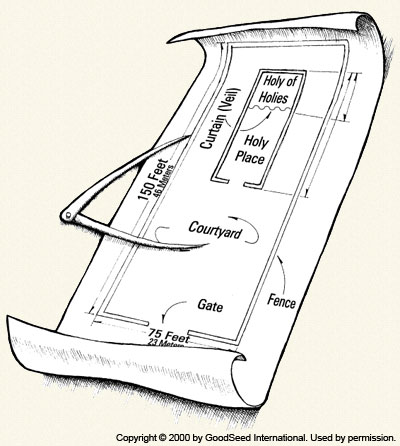
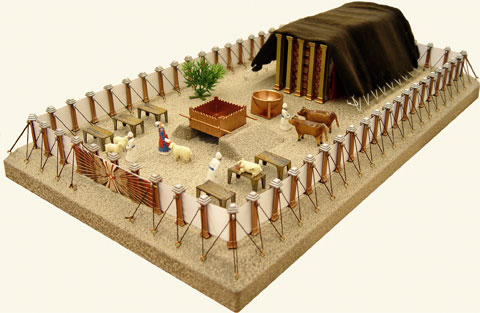
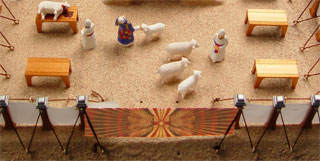
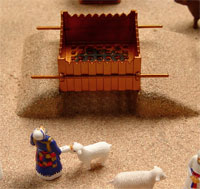
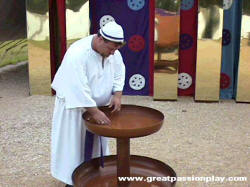






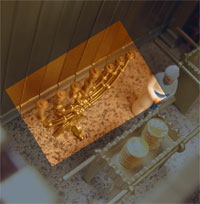
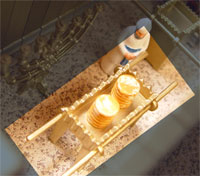
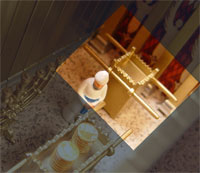
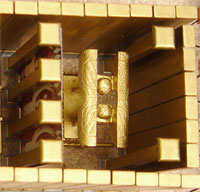
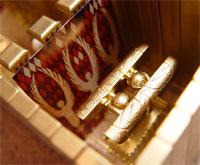
 this thread is over 2 yrs old, as are the other ones I see were bumped up.
this thread is over 2 yrs old, as are the other ones I see were bumped up. s
s ]
]